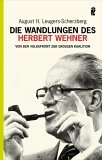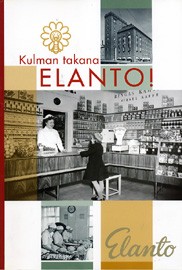Madam President,
I have the honour to speak on behalf of the European Union.
The Acceding Countries Bulgaria and Romania, the Candidate Countries Turkey, Croatia* and the former Yugoslav Republic of Macedonia*, the Countries of the Stabilisation and Association Process and potential candidates Albania, Bosnia and Herzegovina, Serbia, and the EFTA countries Iceland and Liechtenstein, members of the European Economic Area, as well as Ukraine and the Republic of Moldova align themselves with this declaration.
* Croatia and the former Yugoslav Republic of Macedonia continue to be part of the Stabilisation and Association Process.
Madam President,
The dramatic developments that we witnessed during the last months have again demonstrated the urgent need to move from violence and hatred to peace and confidence. I would like to thank the Arab League for its initiative to convene this session as also the European Union sees that the most pressing issue is to end the current stalemate of the peace process. There are no military or unilateral solutions to any of the challenges and problems of the Middle East. Lasting peace and security in the region can only be ensured by a comprehensive settlement with a negotiated two-state solution to the Israeli-Palestinian conflict at its core.
The urgency to change the developments in the region is dictated first and foremost by the fact that the situation on the ground is deteriorating and we must urgently take measures to alleviate the situation of the Palestinian people. The economic and humanitarian situation is severe in the Palestinian Territories: 70 % of the population live under the poverty line, most of them children deprived of their basic needs.
The European Union has mobilised more resources than ever before to meet the urgent needs of the Palestinian people, including through the Temporary International Mechanism. This mechanism has allowed substantial resources to be channelled directly to the Palestinian people in the last few months, and it has now been extended. We encourage donors and others in the region to make full use of this mechanism. The European Union repeats its call on Israel to resume transfers of withheld Palestinian tax and customs revenues. These resources are needed in order to improve the severe situation of the Palestinians.
The humanitarian situation is directly connected to the question of access and movement. This is a major problem in the Palestinian Territories in general and in Gaza in particular. The European Union has stressed in its contacts with Israeli counterparts that the border crossings such as Rafah and Karni be opened and remain open. We urge the parties to urgently take concrete steps to implement their obligations under the Agreement on Movement and Access, and in this regard, the European Union reiterates its continued commitment to EU Border Assistance Mission in Rafah.
The viability of an agreed two-state solution is threatened by the continued enlargement of settlements and the continued building of the separation barrier on Palestinian land. The European Union will not recognise any changes to the pre-1967 borders other than those agreed by both parties.
The European Union demands that Palestinian militants cease all violence directed towards Israel or other Palestinians. The Israeli soldier must be released immediately and unconditionally. The detained Palestinian ministers and legislators must also be released. The European Union also urges Israel to abide by its obligations under international humanitarian law, including its obligation to protect civilians and not to use disproportionate measures. Security is not an exclusive matter for one party – it matters for everyone in the whole region.
The European Union stresses the need to solve underlying problems by political means. Therefore we welcome the announcement by Palestinian President Mahmoud Abbas on an agreement to form a government of national unity. The European Union has expressed its hope that these negotiations will be rapidly and successfully concluded and that the new government’s political platform will reflect the Quartet principles and allow for early engagement.
There is also a need to proceed on a diplomatic path regionally. This is why we need support for the peace process from all regional partners. The ultimate goal is to receive a comprehensive and sustainable peace in the Middle East. It is imperative to create new dynamics towards that goal.
The European Union welcomes the statement of the Quartet issued yesterday which reaffirms the commitment of the Quartet to the Roadmap. The Roadmap has as its aim the creation of two states living side by side in peace and security. In order to achieve this all parties must respect their obligations under the Roadmap. The European Union gives its full support to the Quartet’s intention to meet on a regular basis in the coming period, as well as to actively engage with the parties and other regional partners to monitor developments and to discuss the way ahead.
Thank you, Madam President.


